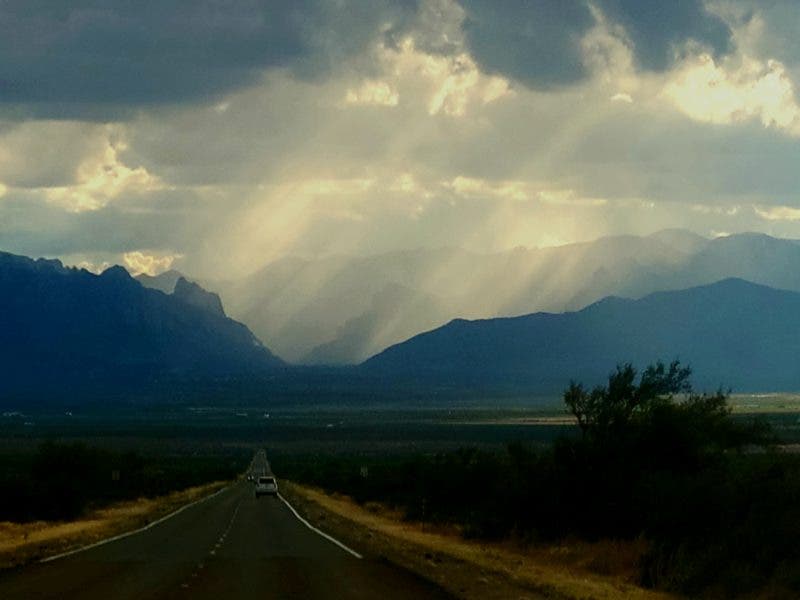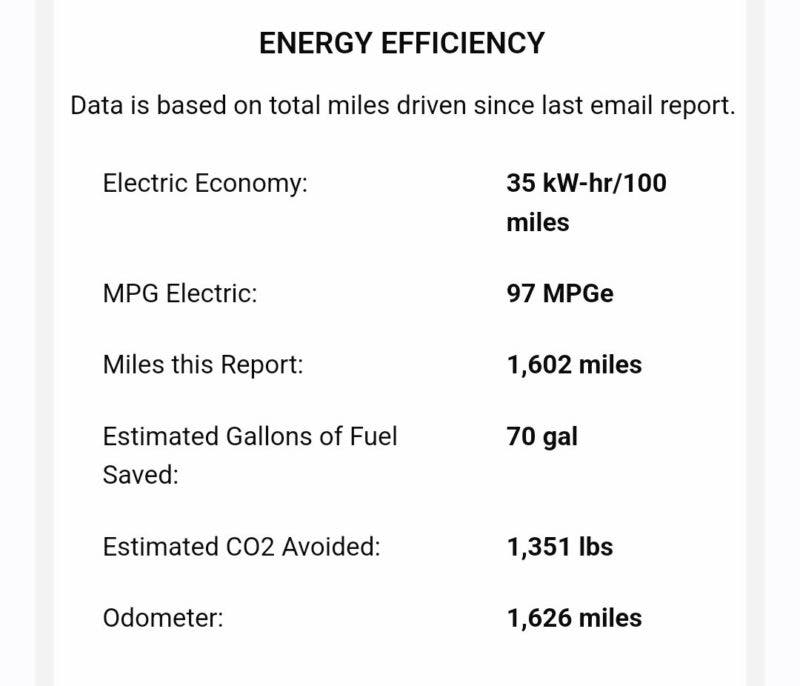Like any good CleanTechnica writer, I do long-term reviews of any clean vehicle I buy, borrow, rent, or get time with from the manufacturer. A recent e-mail from GM’s OnStar service tells me that I’ve had the vehicle for about a month, so it seems like a good time to give readers an update. Really, a month is enough time for the “I bought a new car!” feeling to fade a bit, and for more objective looks at the vehicle to happen.
If you’d like to review what I’ve written so far, be sure to check out my initial thoughts on the car here, and my account of taking it on some rough dirt roads here. I also discuss applying for GM and power company EVSE installation rebates here.
Efficiency
OnStar’s e-mail gave me one simple figure for the month, during which I drove about 1600 miles: 97 MPGe. At first reading, 97 sounds like a terrible MPGe figure, but it’s a figure that needs to be put in context.
The EPA ratings for the Bolt EUV are 125 city, and 104 highway (because EVs are generally less efficient on the highway, which is the opposite situation to that of combustion vehicles). EPA highway tests are generally not very realistic to begin with (they have very slow highway speeds and simulating traffic slowdowns), and on top of that, I live in the western United States where speed limits on the interstate almost always start in 7, and sometimes start in 8. Most of my driving was on roads with a 75 MPH speed limit, with the rest of the local driving mostly on 65 MPH freeway. This roughly translates to “Go 80 or get run over” most of the time.
So, given that I’ve spent a lot of time above EPA highway speeds, it makes sense that I’d see this average.
This comes out to about 2.8 miles/kWh, and ABRP’s OBD connection tells me the car says it has 61.4 kWh of usable battery capacity. For those unaware, the battery is still 66 kWh as advertised, but GM is smart and leaves some buffer at the top and bottom of the battery to make sure it doesn’t get damaged. The 2.8 miles/kWh multiplied by the 61.4 kWh comes out to an 80 MPH range of just over 170 miles, which is pretty good considering the speeds involved.
ABRP gave me some other nuggets of efficiency information. The 65 MPH reference consumption is 3.43 miles/kWh (292 Wh/mile). This figure is what ABRP uses as a baseline when calculating available range on planned routes, and I’ve found the predicted remaining battery at charge stops to be very accurate. So, 3.4 miles/kWh at 65 on level ground seems to be a good figure that matches the real world.
The Car’s First Warranty Repair
One thing I haven’t mentioned yet is that the car had something break on the day we bought it, and it happened before we even drove off the lot. The car’s infotainment unit had one of those temporary screen protectors on it, and when my wife removed it, a chunk of the corner of the screen came up with it. This was obviously a minor factory defect (weakness in the plastic on that corner or something), so they immediately put an order in for a replacement screen.
The only thing that was annoying is that I wasn’t able to take it in quickly after the screen arrived, and I got a frantic call from the dealer saying they were going to be charge a core charge if we didn’t get it in by the next day. This was during a chaotic bathroom remodel we already had going on, so I got my tired butt down there and took a nap while they replaced the screen.
I think GM needs to work with suppliers more to be flexible about replacement part timelines and core charges when a customer can’t make it in quickly for a repair.
One Minor Annoyance With The Infotainment
Speaking of the infotainment system, I’ve had two occasions where wifi interference wiped out my Android Auto session and it didn’t immediately reconnect. When I tried to reconnect manually, it just didn’t work, so I had to go without Android Auto until I could turn the car off, open the driver’s door, and let the vehicle do a full reboot.
I know that 2017-21 Bolts could do a reboot of the infotainment by holding a button down, but I can’t find any such instructions on the Bolt EUV, and nothing I’ve tried resulted in a reboot other than stopping the car and completely turning it off.
I’m not so unrealistic as to expect perfect computing. I know that even the best systems will fail sometimes, and I’ve otherwise been happy with the infotainment system and wireless Android Auto (but not the myChevrolet app). The only thing I’d really like to see is a simple reboot procedure for the infotainment system while driving so that I can get my Waze back on the screen and get my music back.
Another Unpaved Adventure
After having a great ride on a fairly rough dirt road near Ruidoso, New Mexico, I decided to take the EUV out on another off-pavement adventure. The trip was a bit rushed, so I didn’t get any good pictures, but I took it out to the Chiricahua Mountains in southeast Arizona. I had never been out there, and didn’t know what to expect, but the roads looked pretty decent on Google Maps (this isn’t the first time I’ve got into more than I though like this).
The drive from near El Paso wasn’t eventful at all, which is a great thing. A full battery got me all the way to Lordsburg, New Mexico, with about a quarter battery remaining, and I got a fairly full charge at the Electrify America station before leaving the interstate for the afternoon/evening.
The road to Portal, Arizona, was also uneventful other than some absolutely beautiful scenery as we watched some storms go over Portal from the New Mexico side. But, as I was out there to sightsee and have fun, I didn’t bring my good camera. I’m still kicking myself for that decision, because this is what I could have gotten a better shot at:

But, despite missing out on some great photo opportunities, I still had a great time and took on some rough trails that most people wouldn’t think the EUV could handle (the US Forest Service warns: “High clearance vehicles are strongly recommended. 4WD also beneficial, if available.”). We did a loop from the little town of Portal to the American Museum of Natural History’s Southwest Research Station, around the back way to Paradise, Arizona, and back to Portal.
Along the way, we navigated washouts, some fairly rocky road (that had been made worse by the popularity of side-by-side UTVs), several modest water crossings, and a number of spots where I needed the front camera to make sure I wasn’t going to scrape anything up. Even when the road was downright awful, the suspension kept things comfortable.
So, as I pointed out before, the EUV is a good budget EV option for people who live in or frequent areas with roads like this. The only caveat is that I haven’t tested such roads when it’s muddy or when it’s snowing, so it may only be a good summer option if you live way out in the woods.
I’m going to revisit the area soon to see the fall colors, and will bring a good camera along next time! But, I still managed to get one decent image from a phone:

All images by Jennifer Sensiba.
Appreciate CleanTechnica’s originality and cleantech news coverage? Consider becoming a CleanTechnica Member, Supporter, Technician, or Ambassador — or a patron on Patreon.
Don’t want to miss a cleantech story? Sign up for daily news updates from CleanTechnica on email. Or follow us on Google News!
Have a tip for CleanTechnica, want to advertise, or want to suggest a guest for our CleanTech Talk podcast? Contact us here.
Read the full article here



